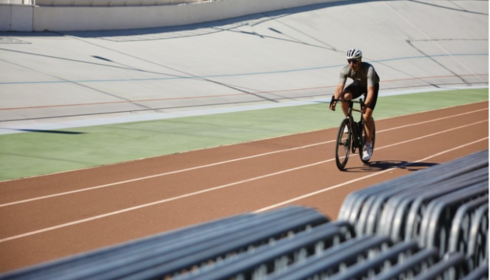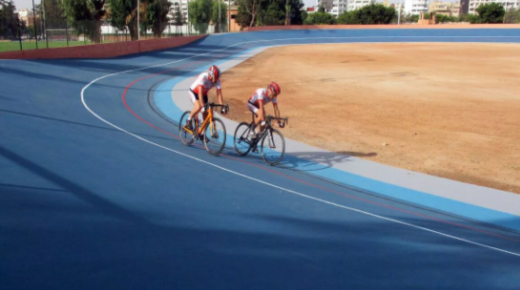With urban development and the growing interest in fitness and eco-friendly transportation, cycle tracks are becoming essential infrastructure in cities, campuses, and sports complexes. Whether used for recreation, training, or competition, the surface quality of a cycle track plays a vital role in safety, speed, and rider comfort. In this guide, we’ll cover the key aspects of cycle track flooring, suitable materials, the role of synthetic acrylic flooring, and the importance of cycle track resurfacing.
What Is Cycle Track Flooring?
Cycle track flooring refers to the surface layer applied to a dedicated cycling path or velodrome. This flooring must meet specific standards in terms of traction, smoothness, weather resistance, and durability. A well-constructed track enhances rider safety, supports consistent performance, and requires minimal maintenance.
Ideal flooring track systems are designed to accommodate both recreational and competitive cycling, and should work well in varying climates and traffic conditions.
Key Features of Ideal Flooring for Cycle Tracks
When choosing a cycle track material, the following features are essential:
- Slip Resistance: Prevents accidents during sudden braking or in wet conditions.
- Smoothness: Allows for higher speeds and a consistent riding experience.
- UV and Weather Resistance: Protects against fading, surface wear, and heat expansion.
- Durability: Withstands continuous use, temperature changes, and occasional vehicle crossings (if any).
- Low Maintenance: Requires minimal upkeep over years of use.
These characteristics are why synthetic acrylic flooring is widely preferred for modern cycle tracks.
Why Synthetic Acrylic Flooring Is Best for Cycle Tracks
Synthetic acrylic flooring has become one of the most reliable materials for constructing and resurfacing cycle tracks. Its advantages include:
- Seamless and Non-Porous Surface: Prevents water logging and enhances drainage.
- High Elasticity and Impact Resistance: Reduces wear and tear from continuous tire movement.
- Customizable Colors and Markings: Enhances visibility and adds aesthetic value to public tracks.
- Fast Installation and Quick Drying: Minimizes downtime during construction or cycle track resurfacing.
Moreover, synthetic acrylic systems are eco-friendly, low-VOC (volatile organic compounds), and compatible with asphalt or concrete sub-bases. These qualities make it ideal for both indoor velodromes and outdoor tracks.
Understanding Cycle Track Materials: What Goes Into the Floor?
The durability of a cycling path depends on the base and top layers. Here’s what typically goes into a professional cycle track material system:
1. Sub-Base Layer
Usually constructed using asphalt or concrete, this layer provides structural support and defines the basic track geometry.
2. Primer or Bonding Agent
This ensures a strong bond between the sub-base and the top coat. It prevents peeling or lifting of the coating.
3. Synthetic Acrylic Coating
Applied in multiple layers, this is the final surface riders interact with. It includes anti-slip additives and can be pigmented in various shades (commonly red, green, or blue).
4. Line Markings
Clear, skid-resistant markings are applied for lanes, edges, turns, and guidance. These are made from reflective or UV-stable materials to maintain visibility in all conditions.
Benefits of Proper Cycle Track Flooring
Installing a high-quality cycle track flooring system offers long-term benefits such as:
- Enhanced Safety: Anti-slip and smooth coatings reduce fall risk.
- Better Performance: Smooth, predictable surfaces improve speed and endurance.
- Aesthetic Appeal: Bright, clean cycle tracks improve urban aesthetics and encourage usage.
- Low Lifecycle Costs: Requires less maintenance compared to traditional concrete or tarred tracks.
Whether you’re managing a city cycling project or a private athletic facility, a quality cycle track flooring system ensures user satisfaction and structural longevity.
When and Why to Consider Cycle Track Resurfacing
Over time, even the best cycle tracks degrade due to weather, UV exposure, and constant wear. That’s when cycle track resurfacing becomes essential.
Signs Your Cycle Track Needs Resurfacing:
- Cracks, peeling, or faded surface coating
- Rough patches or bumps affecting rider comfort
- Water pooling due to loss of slope or surface texture
- Faded markings and reduced traction
Resurfacing typically involves cleaning the track, repairing cracks, and applying fresh coats of synthetic acrylic flooring. It’s a faster and more cost-effective option than rebuilding the entire surface.
Typical Lifespan and Maintenance of Cycle Tracks
A professionally built synthetic acrylic cycle track can last 8–10 years with regular maintenance. To extend its life:
- Clean regularly to remove debris, mud, or moss
- Inspect and reseal cracks early before they expand
- Repaint markings as soon as they fade
- Avoid heavy vehicle use on the track to prevent surface damage
Regular inspections can also determine when it’s time to schedule cycle track resurfacing, preventing accidents and costly structural repairs.
Common Applications of Synthetic Acrylic Cycle Tracks
- Urban Bicycle Lanes in smart cities
- Athletic Tracks combining running and cycling zones
- University and School Campuses for student use
- Velodromes for professional or semi-professional training
- Cycling Trails in parks and fitness zones
In all these environments, synthetic coatings ensure long-term use without frequent disruption.
Final Thoughts
As the demand for sustainable, safe, and well-designed cycling infrastructure grows, investing in high-quality cycle track flooring has never been more important. From selecting the right cycle track material to applying long-lasting synthetic acrylic flooring, each step ensures better performance, safety, and aesthetics.
Whether you’re developing a new cycling path or upgrading an old one, proper planning and timely cycle track resurfacing will keep your track functional, attractive, and ready for years of use.



